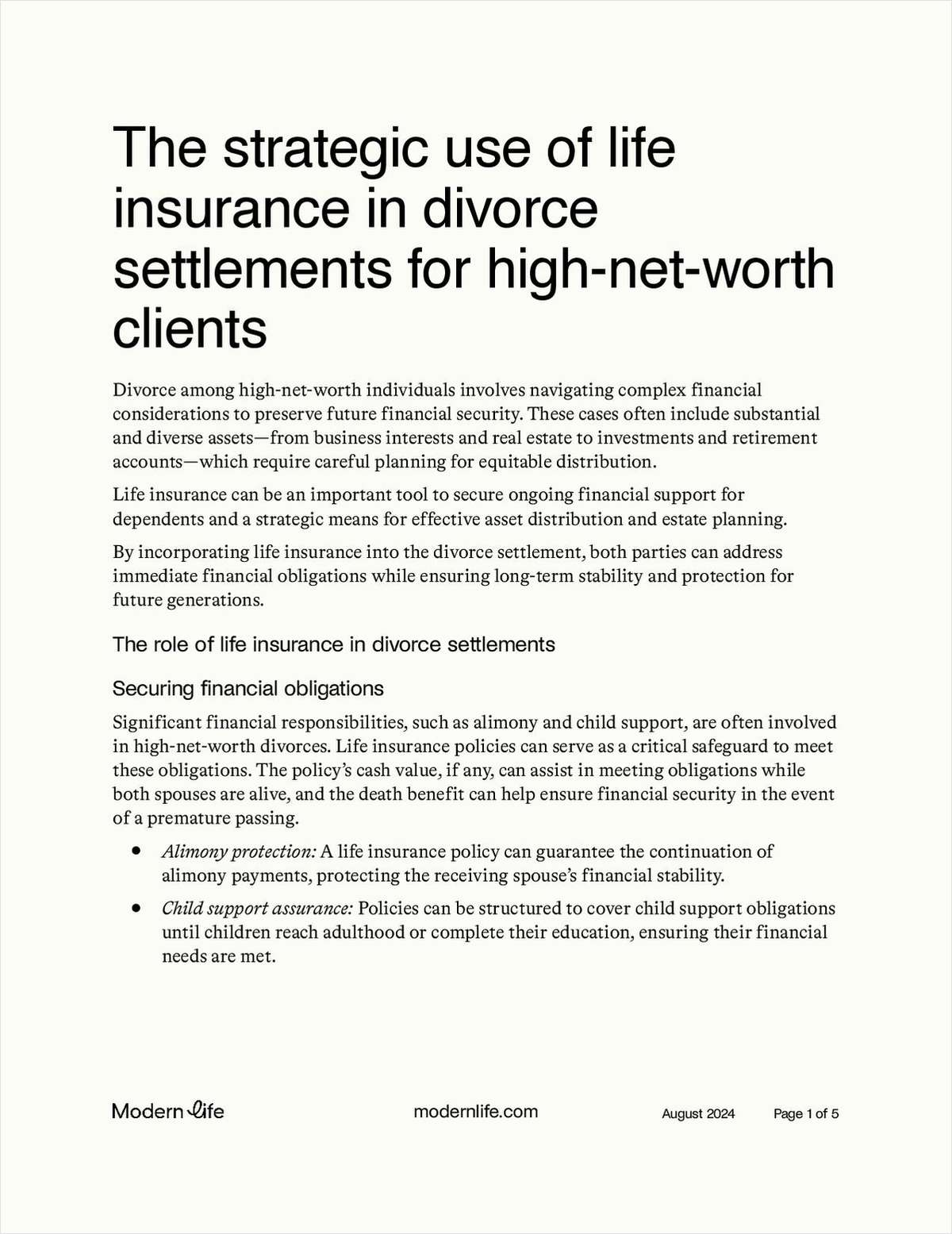The securitizing of life insurance products will continue gathering momentum in 2007, say experts in the industry.
In interviews with National Underwriter and during a recent conference, 'Managing Change in the Life Insurance Industry,' organized by The Conference Group Ltd., a sister company of National Underwriter, the potential of securitization was raised.
Securitizations can reduce the weighted average cost of capital for a company as well as enhance return on equity, according to Alex Cowley, managing director with the insurance products group with Lehman Brothers, New York.
Currently, there is about $12.3 billion in embedded value and Triple-X life insurance-linked transactions today, Cowley notes.
In addition to Triple-X type of transactions, Cowley says there have also been securitizations of other product lines, including disability income.
And while most transactions are investor-grade, Cowley says that a 'BB'-rated transaction as well as an unrated transaction have also been brought to market.
Securitizations of life insurance business will accelerate, although it may be slower at the start of the year than in fourth quarter 2007, when companies take stock of their capital positions, says Joel Levine, senior vice president and team leader-U.S. life and health insurance with Moody's Investors Service, New York.
There are a number of reasons that Levine says he believes the pace of securitizations will pick up. Companies are continually trying to optimize capital, he explains, and if they can monetize value in a business and redeploy that value, then firms using this technique can be more competitive.
Additionally, in some instances, it is quicker and more efficient and possibly cheaper to securitize the value in a business rather than sell it, Levine notes.
Securitizations also make it possible for companies to "permanently lock in the cost of financing" rather than to have the uncertainty of renewing letters of credit on an annual basis, Levine explains.
The only limiting factor with securitizing a block of business, according to Levine, is the predictability of the underlying assets. The higher the volatility of those assets, he continues, the greater the uncertainty regarding assumptions on that block.
For instance, he says that securitizing variable annuities with guarantees could be more difficult than products with more predictable assumptions for the same reasons that reinsurance on these products is limited.
While conceivably "there may be a clever way to slice and dice" such a transaction, in all likelihood, there would be a "toxic piece" that would force such a low price to compensate for an investor's required rate of return, that it would eliminate the benefits of completing such a transaction, Levine explains.



